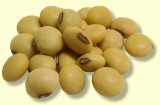 At the Shoot Experience control centre, Alex cooked Jaclyn and I a lovely meal for lunch. It was tofu, rice and veggies with a lot of different spices and flavours. We called it Command Centre rice...I think? Look at the presentation folks...all perfectly chopped and the rice was even served as in a restaurant. AK you are definitely in the wrong business a c-re-a-tive career is calling you! And the dancing that goes along with the lunch is just hilarious...JL did not see the full set of moves as we did last week with the lovely pharmacist/fashion designer...
At the Shoot Experience control centre, Alex cooked Jaclyn and I a lovely meal for lunch. It was tofu, rice and veggies with a lot of different spices and flavours. We called it Command Centre rice...I think? Look at the presentation folks...all perfectly chopped and the rice was even served as in a restaurant. AK you are definitely in the wrong business a c-re-a-tive career is calling you! And the dancing that goes along with the lunch is just hilarious...JL did not see the full set of moves as we did last week with the lovely pharmacist/fashion designer..."Have a mouth as sharp as a dagger but a heart soft as tofu" (Chinese Proverb)
Tofu is a great substitute for meat and if cooked properly it also tastes great. There are several varieties you can buy and usually the harder ones are better for stir fries and the softer ones better for soups like miso.
Tofu is the Japanese name for soybean curd; (the Chinese name is toufu) tofu is made from soybeans, water, and a coagulant such as calcium or magnesium, in a process that has a lot in common with making cheese.
Tofu is high in calcium, iron and B vitamins & low in fat and sodium. Tofu is a excellent source of protein, not only for vegetarians, but also for individuals who have trouble digesting meat, or suffer from heartburn. And if that isn't enough, tofu has been credited with offering protection against diseases such as cancer and osteoporosis.
As per my previous soy posts - tofu is good to eat as it is in its fermented state, raw soybeans (served as endamame) are not!
 Eat it!
Eat it!
